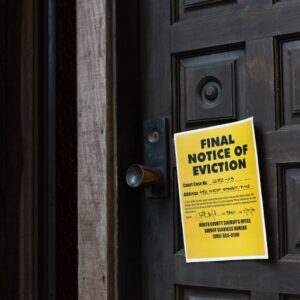A Guide on How to Protect Landlords from Problematic Tenants
Securing Your Investment: A Guide on How to Protect Landlords from Problematic Tenants
Introduction: Renting out property can be a lucrative investment, but the success of this venture heavily depends on securing reliable tenants. Landlords face risks associated with property damage, payment defaults, and legal issues if they end up with problematic tenants. In this guide, we’ll explore effective strategies to help landlords safeguard their investments and minimize the chances of encountering troublesome renters.
- Thorough Tenant Screening: Conducting comprehensive tenant screenings is the first line of defense against bad tenants. Request a detailed rental application, check references from previous landlords, verify employment and income, and perform a credit check. This initial scrutiny helps identify potential red flags and ensures that you have reliable tenants from the start. Screen tenants for free here
- Use a Robust Lease Agreement: Craft a clear and comprehensive lease agreement that outlines the terms and conditions of the tenancy. Include clauses related to rent payment schedules, maintenance responsibilities, and consequences for violating the agreement. A well-drafted lease can serve as a legally binding document to protect your interests.
- Require a Security Deposit: Implementing a security deposit is a standard practice to protect landlords from potential property damage or unpaid rent. Clearly outline the conditions under which the deposit may be retained, ensuring compliance with local laws regarding deposit limits and refund timelines.
- Regular Property Inspections: Conduct regular property inspections to identify and address any issues promptly. This not only helps maintain the property’s condition but also allows you to detect any potential lease violations early on. Clearly communicate inspection schedules to tenants in compliance with local laws.
- Establish Open Communication: Foster open communication with your tenants. Encourage them to report maintenance issues promptly and address their concerns in a timely manner. Establishing a positive landlord-tenant relationship can contribute to a cooperative environment and reduce the likelihood of conflicts.
Use a FREE DIY Landlord Innago Software.
Innago makes Life Easier, By Saving You Time & Money.- Online Rent Collection
- Tenant Screening & Applications
- Digital Document Signing
- Rental Advertising
- Tenant Communication & Work Order Management
- Direct Phone & Email Support
Download this free app or learn more here.
- Utilize Rental History and Tenant References: Consider a potential tenant’s rental history and contact previous landlords for references. Ask about their payment history, adherence to lease terms, and any past issues. This firsthand information can provide valuable insights into a tenant’s reliability.
- Know and Follow Local Laws: Stay informed about local landlord-tenant laws and regulations. Being aware of your rights and responsibilities as a landlord will help you navigate legal challenges and ensure a smooth and lawful relationship with your tenants.
- Screen Guarantors or Co-Signers: When applicable, screen guarantors or co-signers as thoroughly as the primary tenant. Having financially responsible individuals backing the lease adds an extra layer of security in case the tenant encounters financial difficulties.
- Report Rent Payment to Credit Bureaus: As a landlord, you understand the importance of responsible and timely rent payments. A rent reporting service that can benefit both you and your tenants. By reporting your tenants’ rent payments to major credit bureaus like TransUnion and Equifax, you can help your tenants build their credit history and improve their credit score. This can ultimately lead to an increase in financial stability and the ability to secure better rental terms in the future and avoid awkward asking for late rent payment. Learn more here
Conclusion: Protecting landlords from problematic tenants requires a proactive and diligent approach. By implementing thorough tenant screening, utilizing robust lease agreements, and fostering open communication, landlords can minimize risks and enjoy a more secure and profitable rental investment. Remember, prevention is key, and taking these steps can help create a positive and mutually beneficial landlord-tenant relationship.


